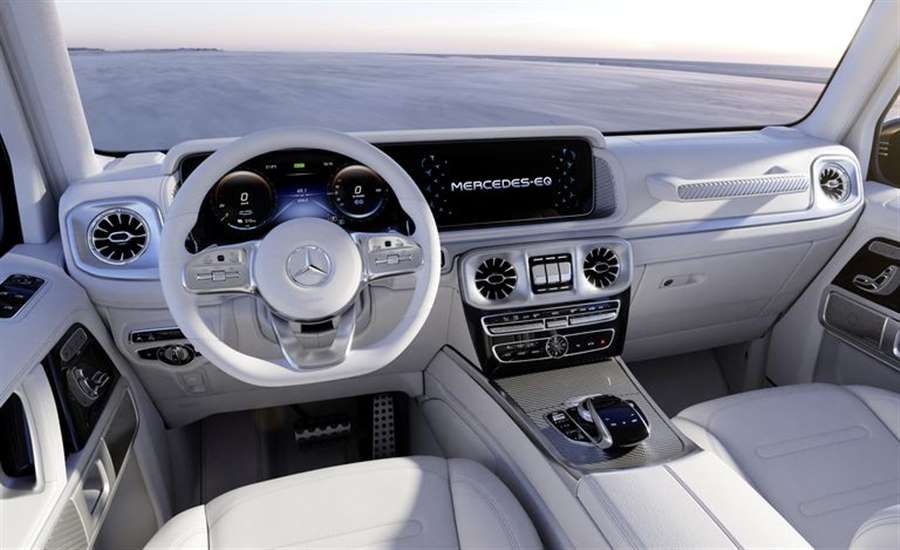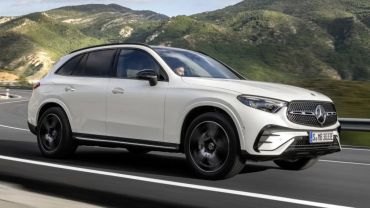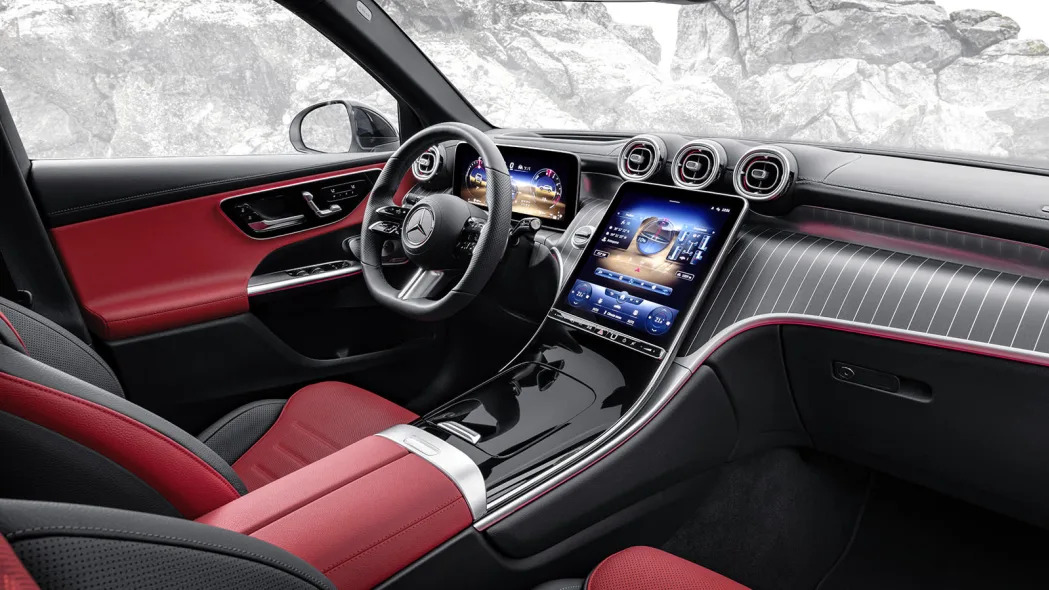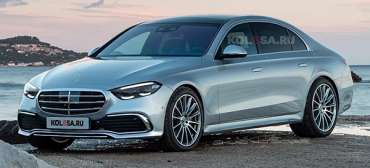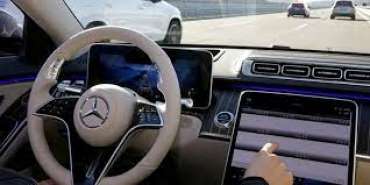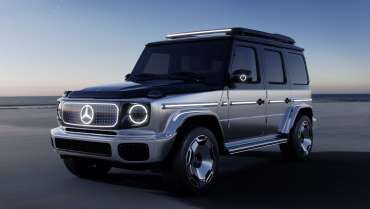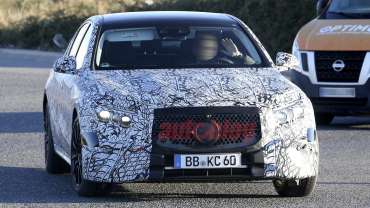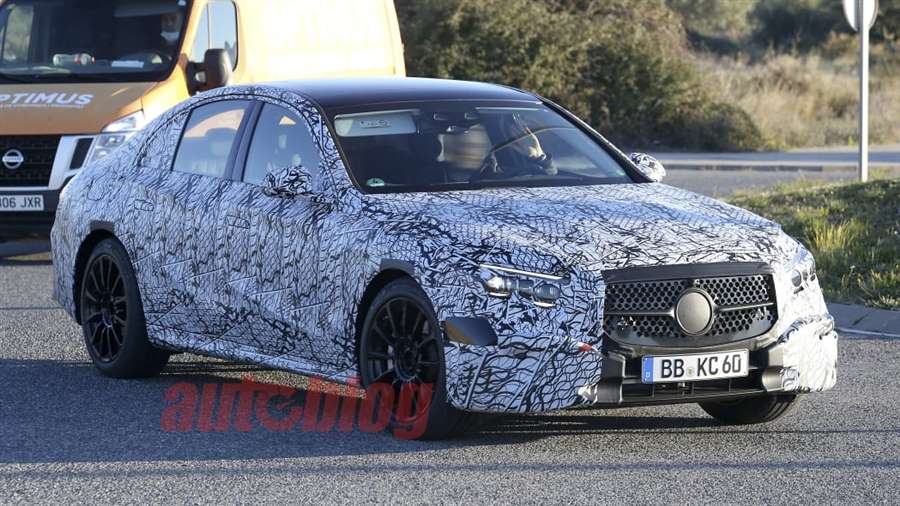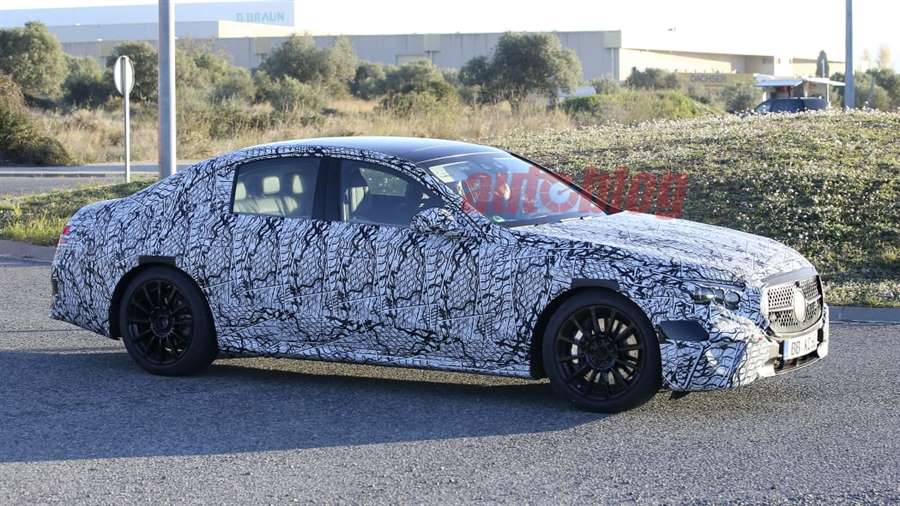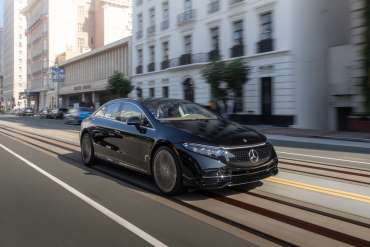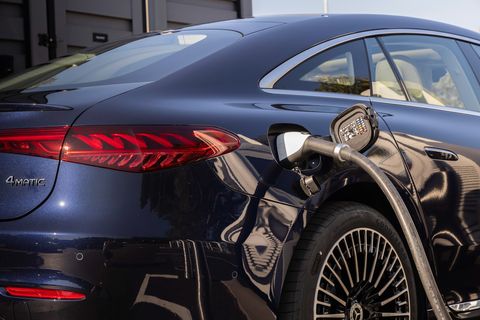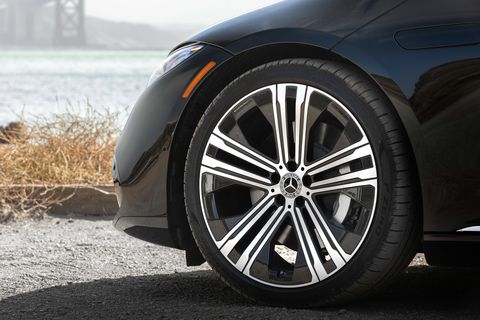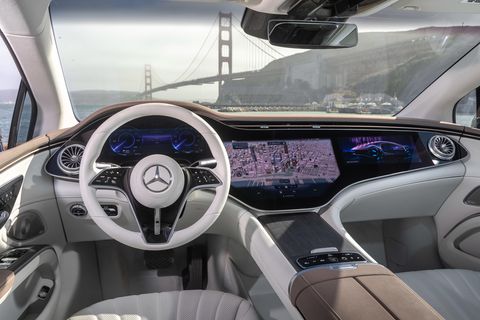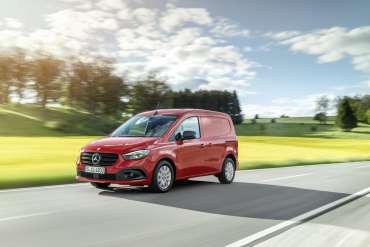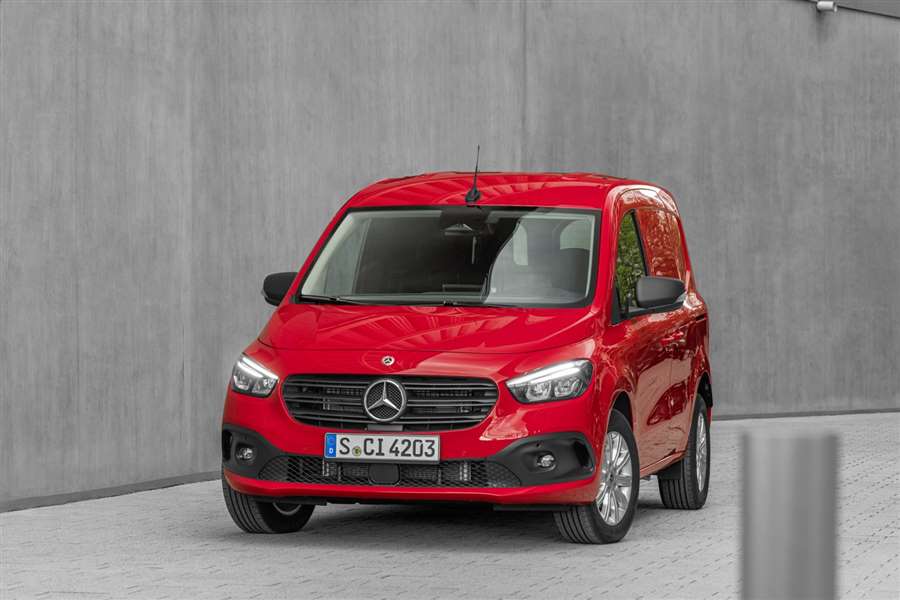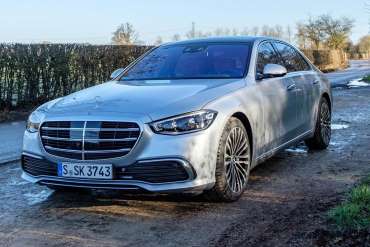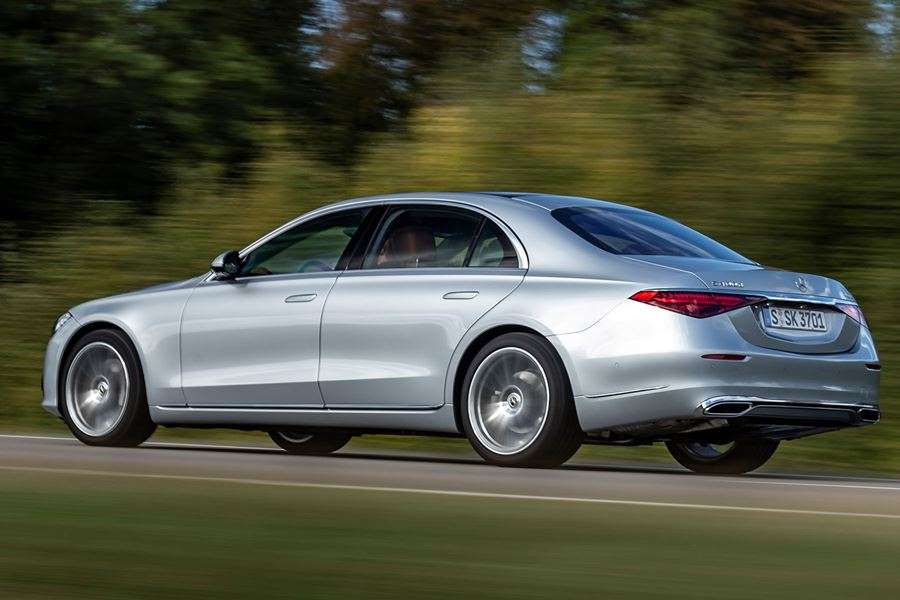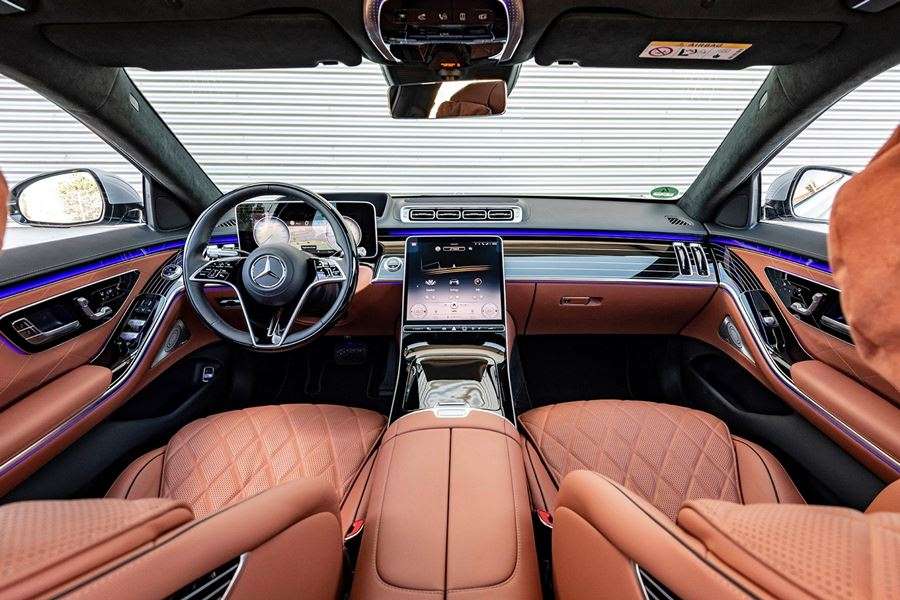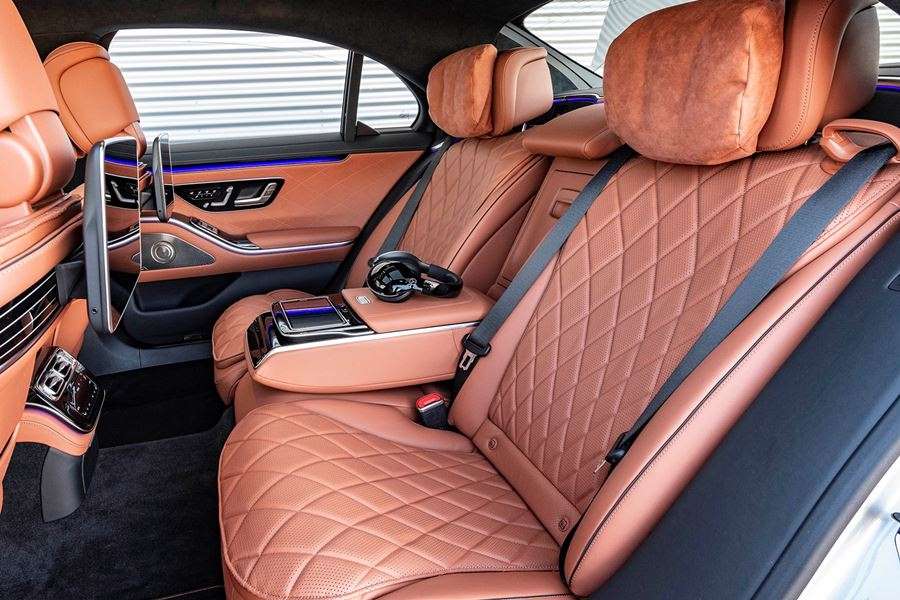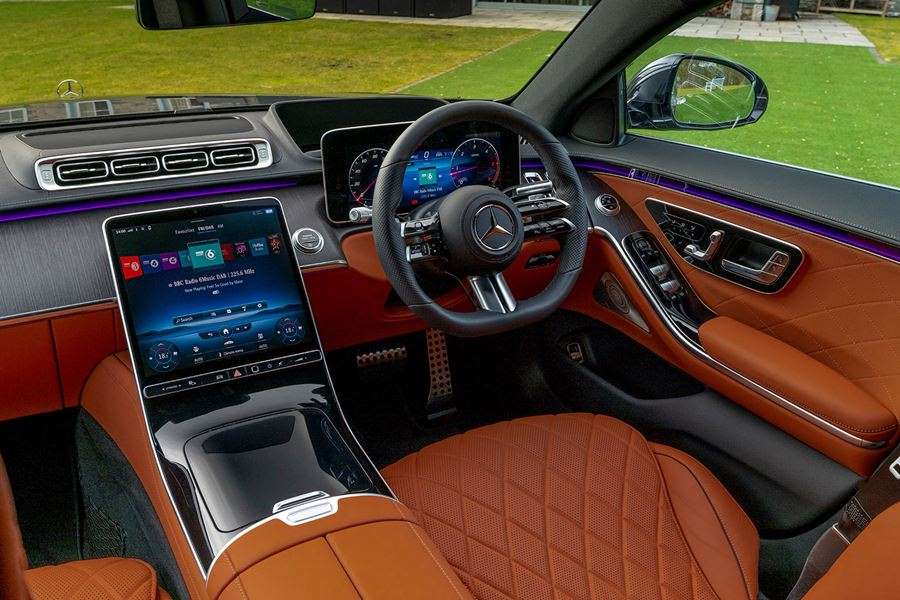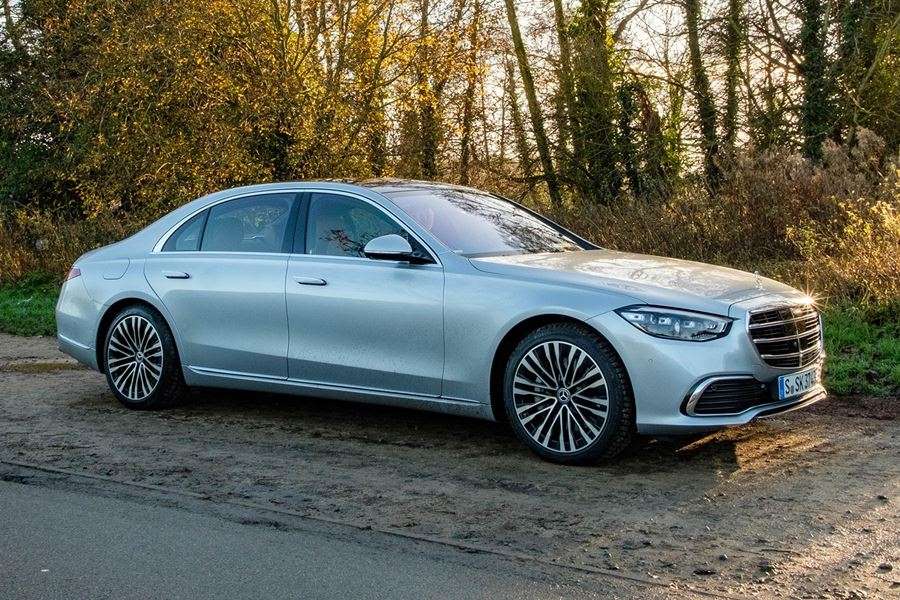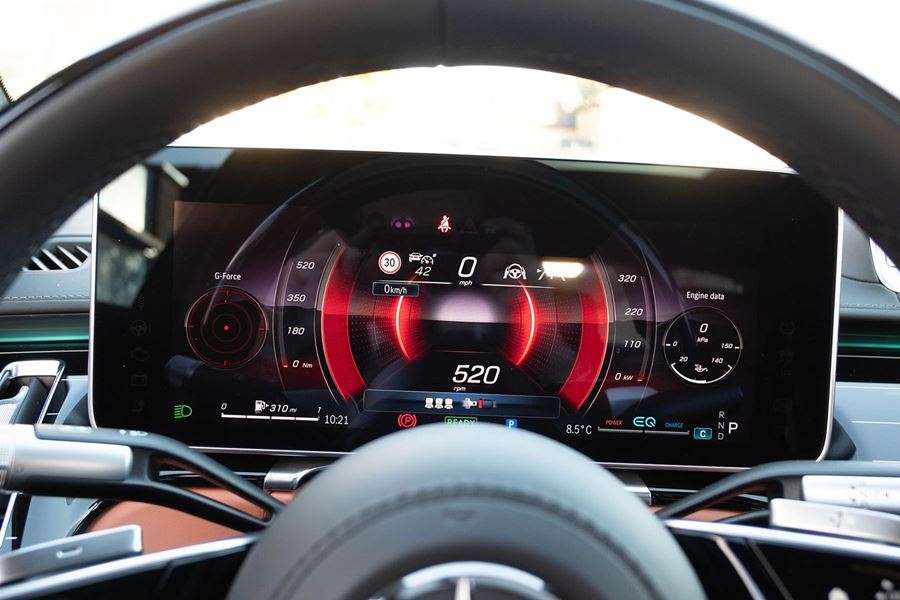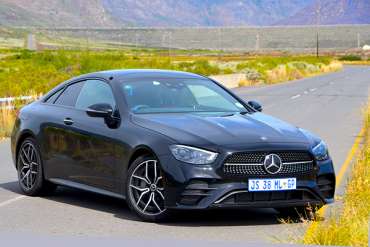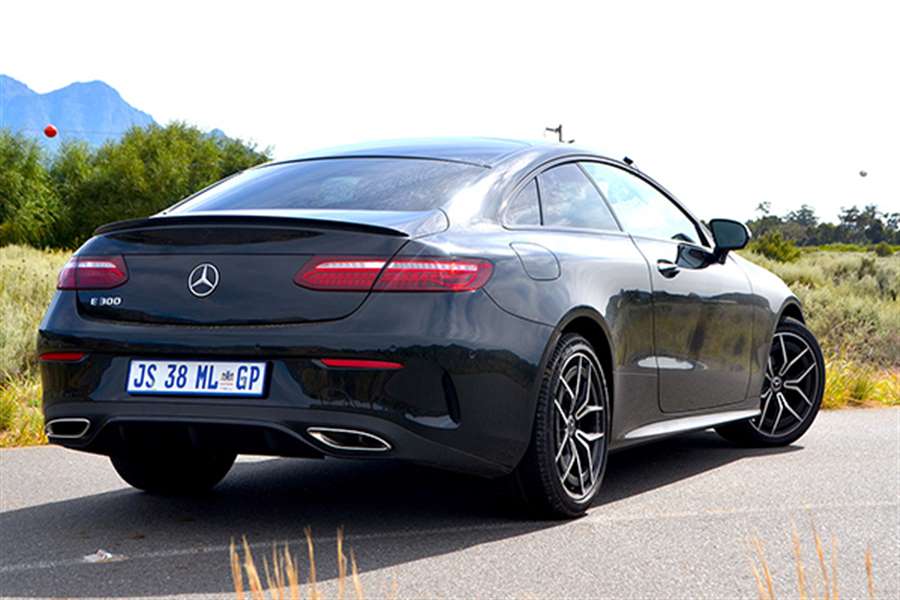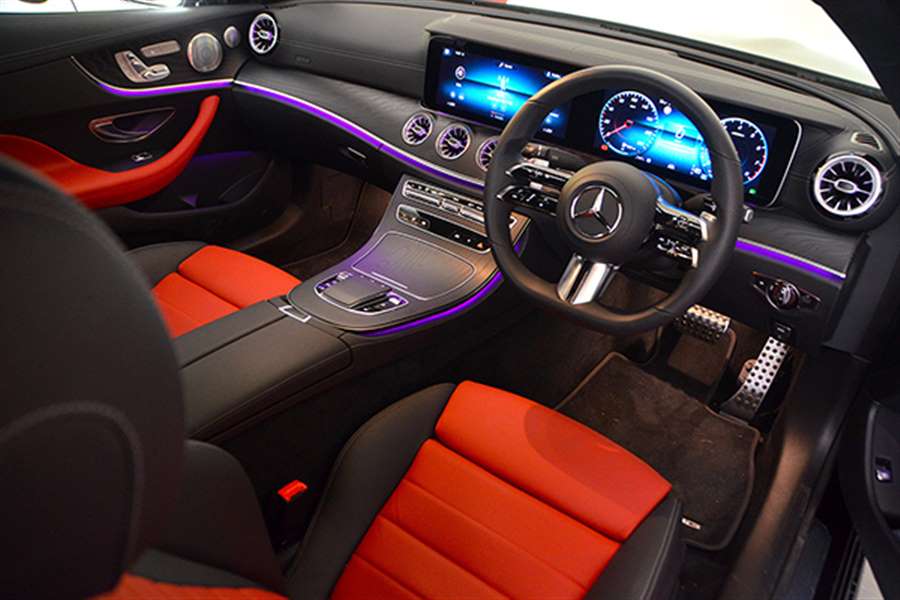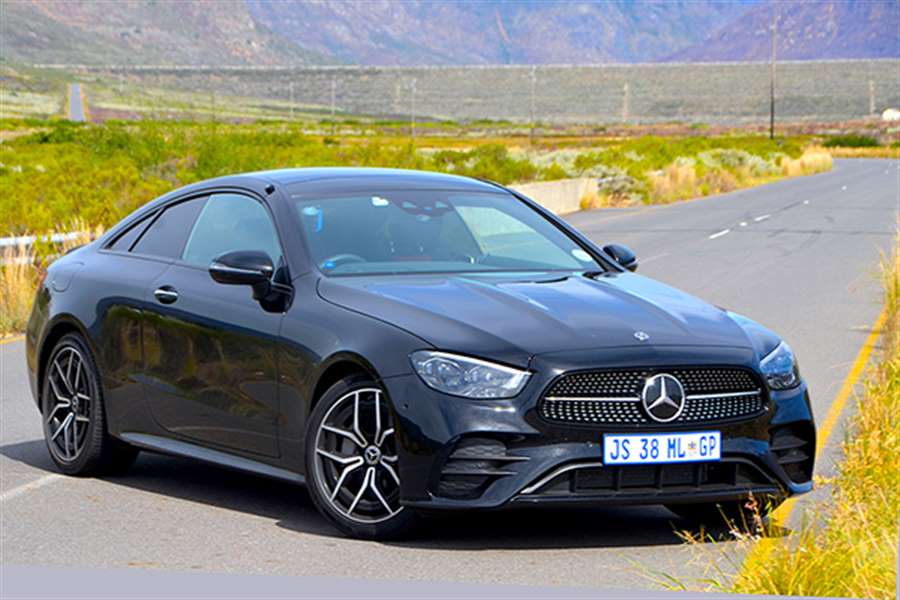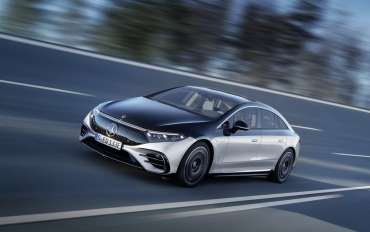The world premiere of the new flagship of the Mercedes-Benz brand was held on April 15. In the years ahead, the EQS model will have the significance that the S-Class had in the years behind us.
It may be able to connect with important Mercedes only because it is luxurious, but the new top limousine from Stuttgart is different in everything else. The unexpected design, called the "one bow roofline", has made the EQS the most aerodynamic production car in the world.
There is also a giant hyper-screen in the cabin of 141 cm and a range of 700 km on electricity (and the same amount of horsepower in the strongest version). These are just some of the trump cards, in fact, not trump cards, but tasks for others, because we know that, whether people like it or not, history records that Mercedes regularly sets standards. Meet the EQS - the electric sedan of the future, in the present.
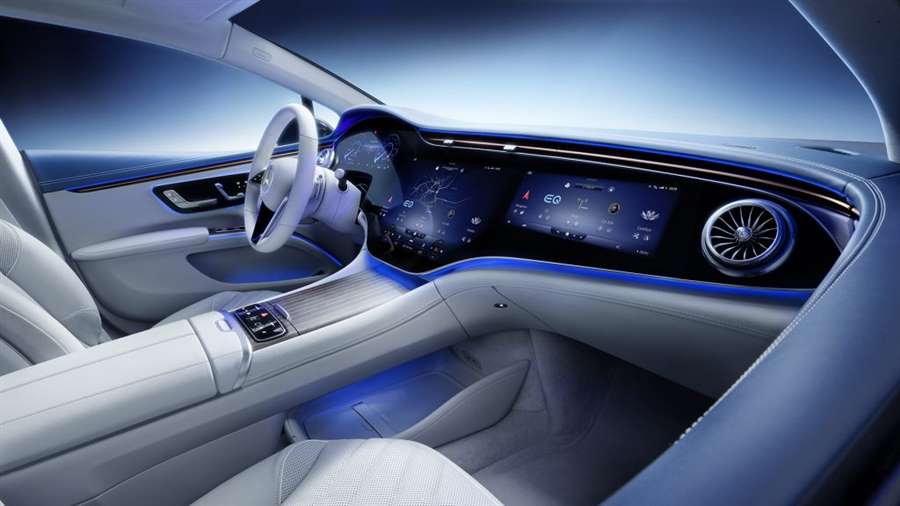
The design of the arch-like sedan, which may not appeal to everyone, has contributed to the 0.20 cd EQS being, as we said, the most aerodynamic production electric sedan (better than both the Tesla S and the Lucid Air model). It's even a kind of legacy from Mercedes - some of the most cult models from the past could also boast that the gusts of wind can be their allies. We are thinking of one of the models that always evokes fond memories, and it was also the first compact sedan with a star on the hood - the legendary 190.
So, design. Yes, it is unusual. Some are already saying that the profile is "critical", while the EQS from the front and back is great. But it's still too fresh to comment. The design should be given time to settle, which has been confirmed many times throughout history. What we can say is that we liked the electric rival from Audi - the e-tron GT, at first glance. But we whispered that to you. We said we wouldn’t talk about design, much less about tastes.
EQS is the so-called "Liftback" sedan which, as they say from Mercedes, should cost something similar to the new S-Class. We'll see.
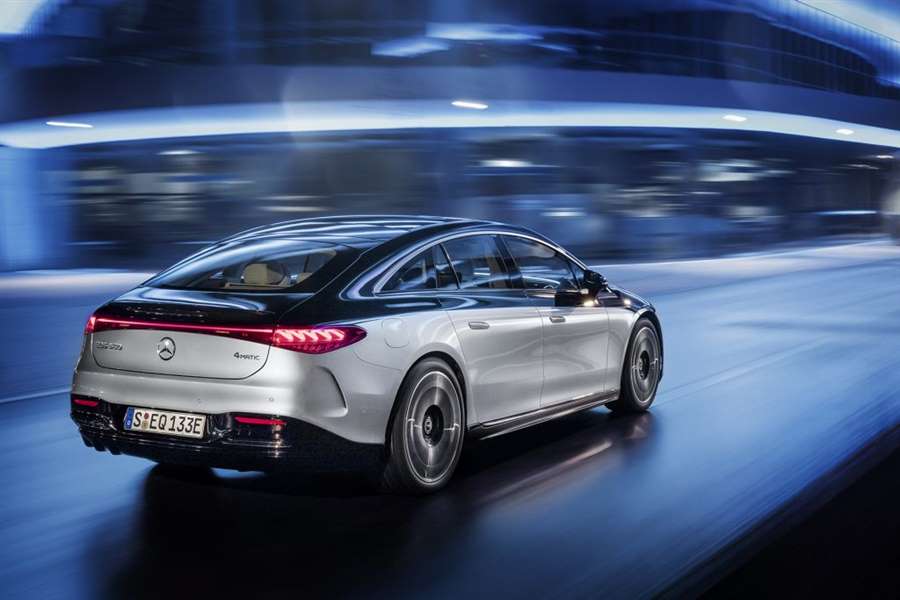
This sedan is also the first Mercedes to be built from scratch as an electric vehicle. It was created on the EVA platform on which EQE (E-Class on electricity), then EQE SUV, as well as EQS SUV will be based.
This base, among other things, allows them special air suspension and control of the rear wheels. Thus, the EQS is 5.2 meters long, 1.9 m wide and 1.5 m high, in addition to being aerodynamic, it also boasts a turning diameter of only 10.9 meters.
The distance between the axles is 3.2 meters (106 cm more than the S-Class), which means that two-meter walkers will be able to stretch their legs inside without any trouble. The lucky ones. And they will also enjoy the "No.6 Mood Linen" fragrance designed especially for EQS. It is number 6 because the first electric cars were added to the 1906 model range with "Mercédès Electrique" vehicles.
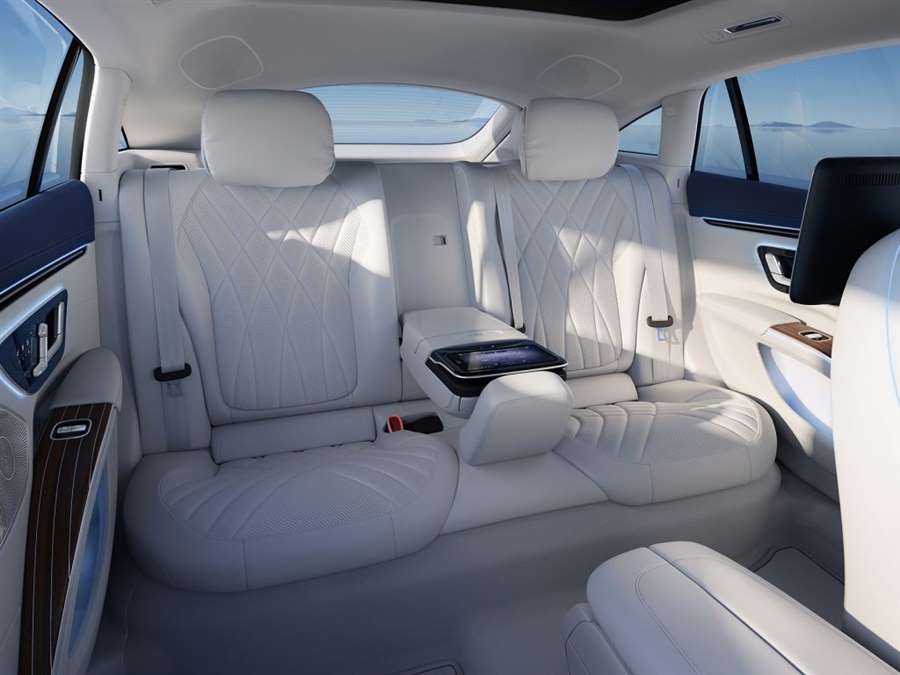
Who cares, the trunk is 610 / 1,770 liters (60 liters more than the S-Class).
Design. Again. It is important to say that the EQS is also made of a lot of aluminum, and in front of the mask there is a black panel that connects the headlights connected by a light strip that extends the entire width of the front part. Now watch this - Digital Light has a light module with three extremely powerful LEDs with light that is refracted and directed by 1.3 million micro mirrors. The resolution is, therefore, greater than 2.6 million pixels per vehicle. That's what they say in Mercedes.
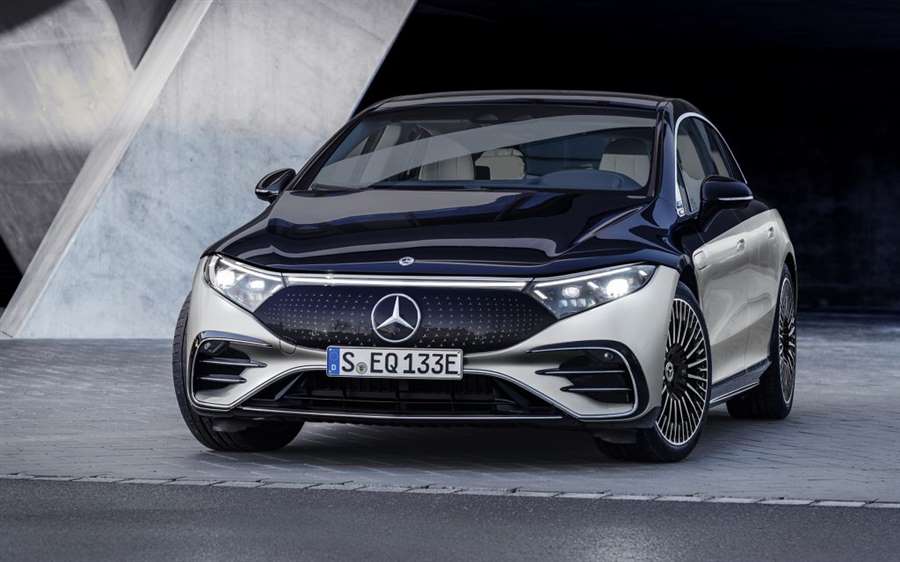
What's inside
We have already written about the cabin, because it was shown before the premiere (find out more here), so we will now present some very interesting figures and information about the hyper-madness inside. With the MBUX Hyperscreen, several screens seem to blend seamlessly, resulting in an impressive curved screen width of 141 centimeters.
The large glass covered by the Hyperscreen is three-dimensionally curved in the molding process at temperatures of approximately 650 ° C. This manufacturing process allows the display to be displayed without distortion across the entire width of the vehicle.
To get to the most important MBUX applications, the user navigates through 0 menu levels. Everything is there right away. That is why it is called "zero layer". Also, through this system, the driver has the option of remotely opening the rear door.
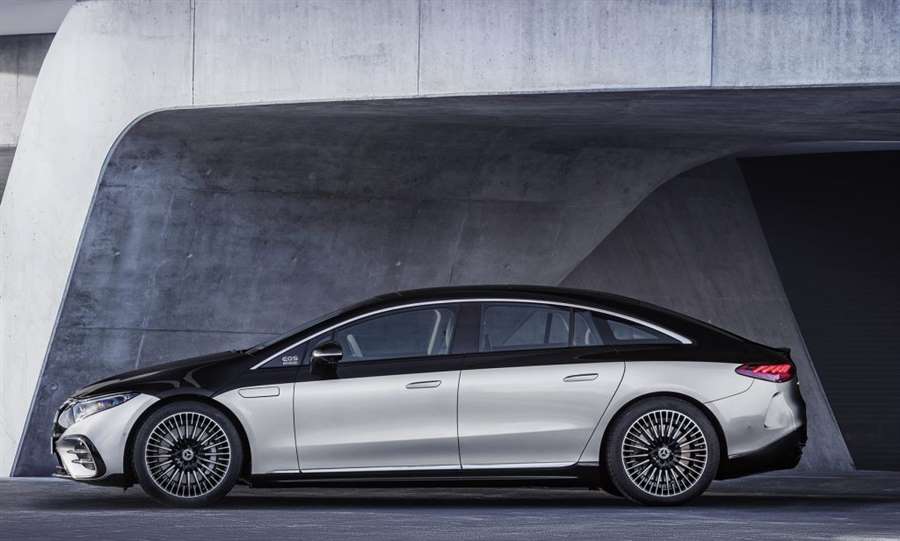
The display area of the optional larger head-up display corresponds to a 77-inch screen. The projection unit consists of a high-resolution matrix of 1.3 million individual mirrors. And they say that in a Mercedes.
For haptic feedback during operation, a total of 12 actuators are located below the surfaces of the Hyperscreen. If the finger touches certain places, they trigger vibrations. The coating on the glass makes cleaning easier, and only the curved glass consists of scratch-resistant aluminum silicate.
Two versions of EQS
The rear axle of the EQS 450 has an electric motor that delivers 333 hp and 568 Nm, while the more powerful EQS 580 has two electric motors (on each axle), thus offering e-4 × 4 drive and a total power of 523 hp and 885 Nm.
It reaches the "hundredth" EQS, weighing 2.5 tons, in 4.3 seconds, or 6.2 in the weaker version. Top speed is 210 km / h. Both versions use a powerful 107.8 kWh battery that can provide a range of 700 km.
An AMG variant is planned to be based on the EQS 580 iwill have more than 700 hp.
Otherwise, depending on the equipment, up to 350 sensors monitor the functions of the EQS and explore the vehicle's environment. And we don't count antennas in that number. The sensors measure, for example, distance, speed and acceleration, lighting conditions, precipitation and temperature, seat occupancy, and count and monitor the movement of the driver's hood or passenger speech.
So much for advanced technology for today.
